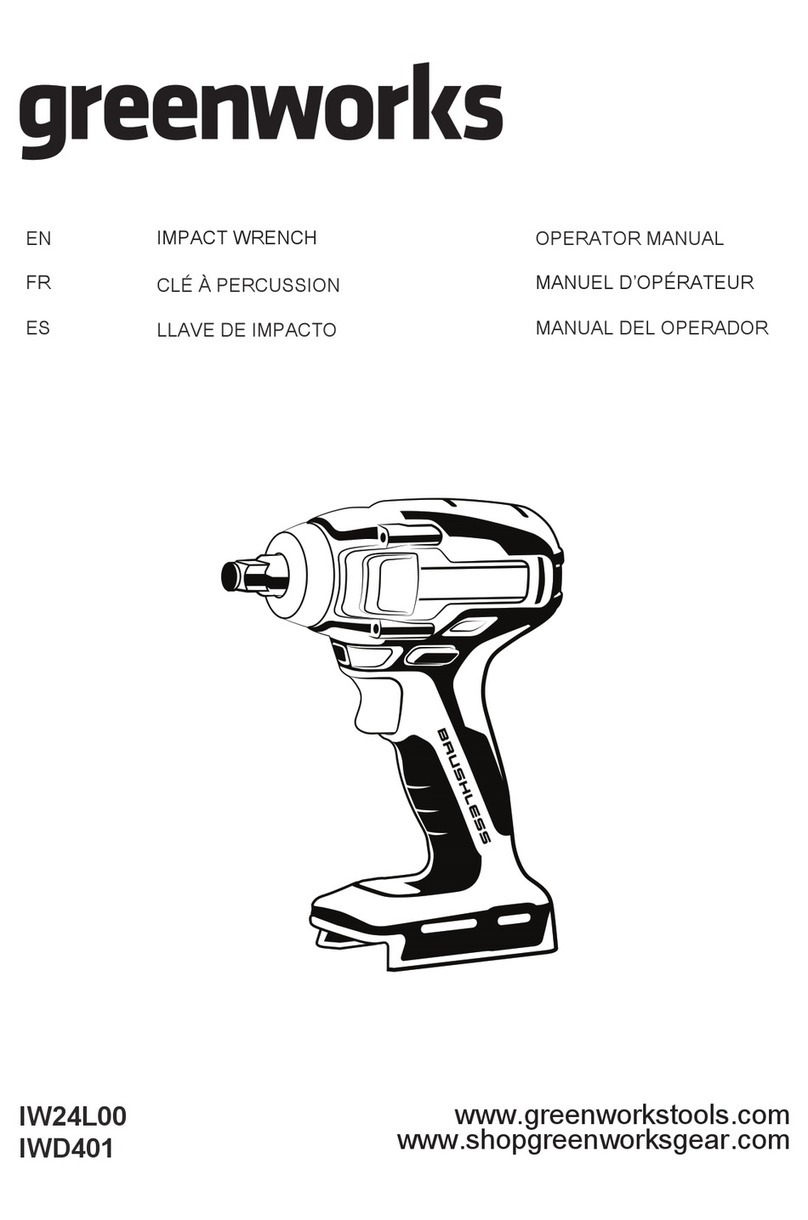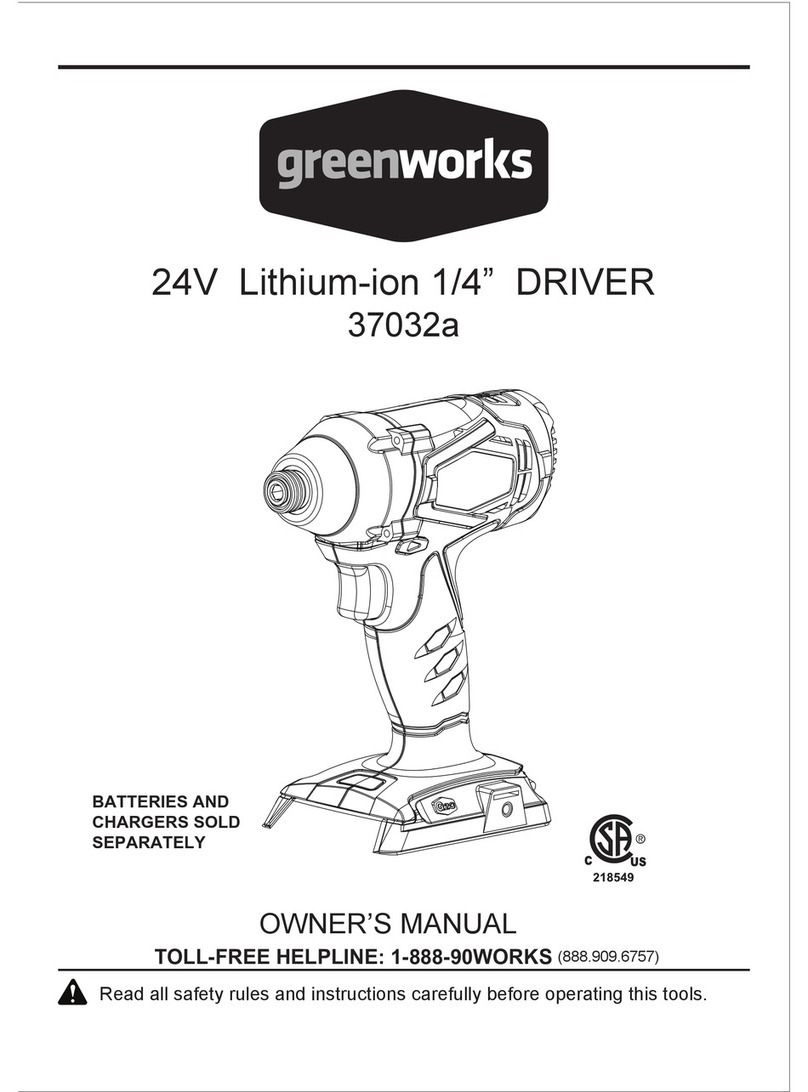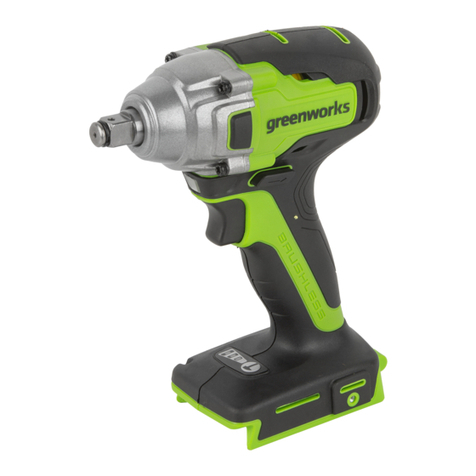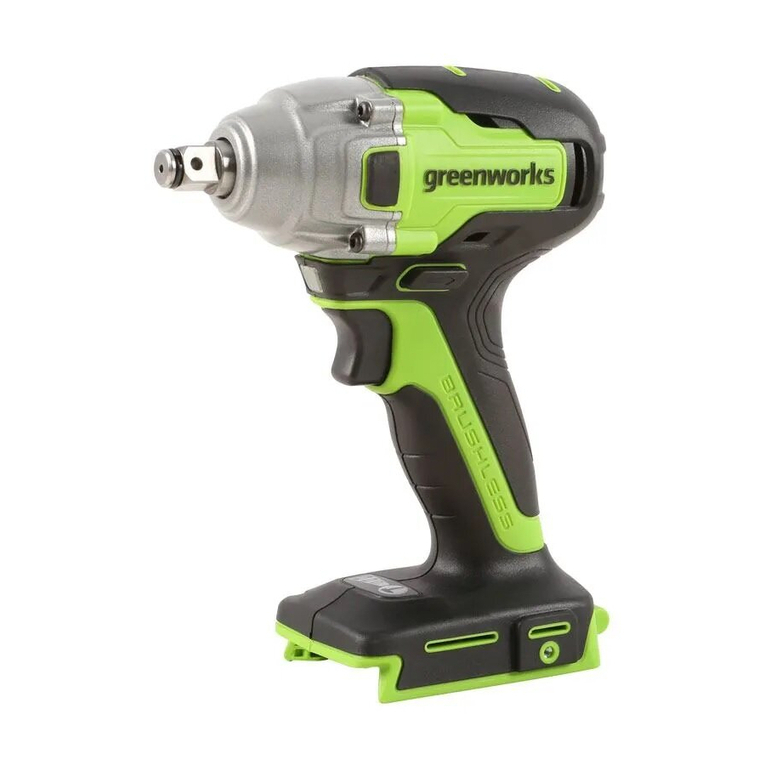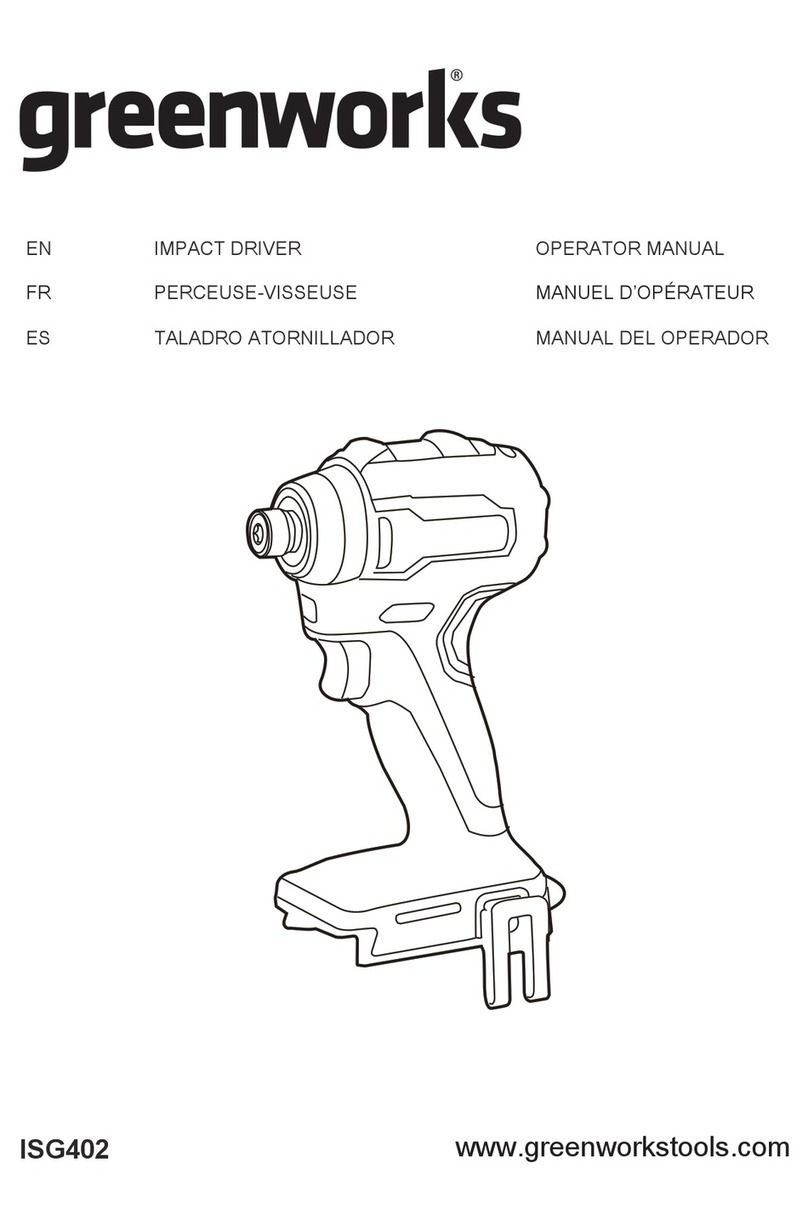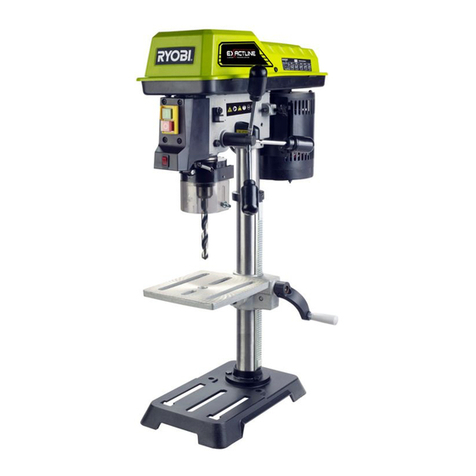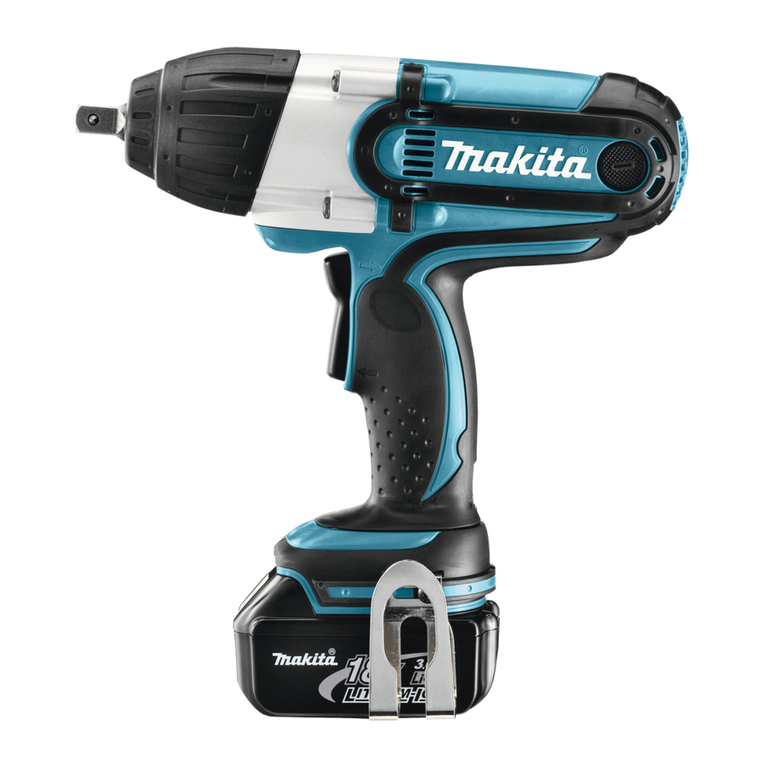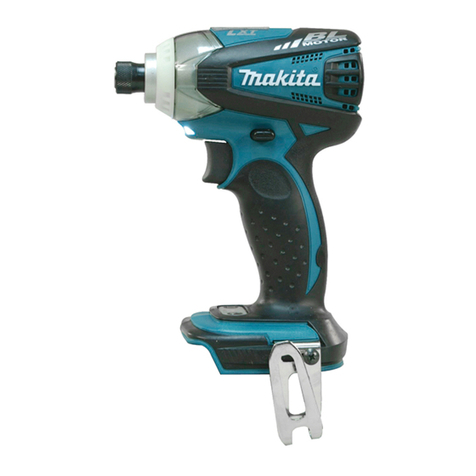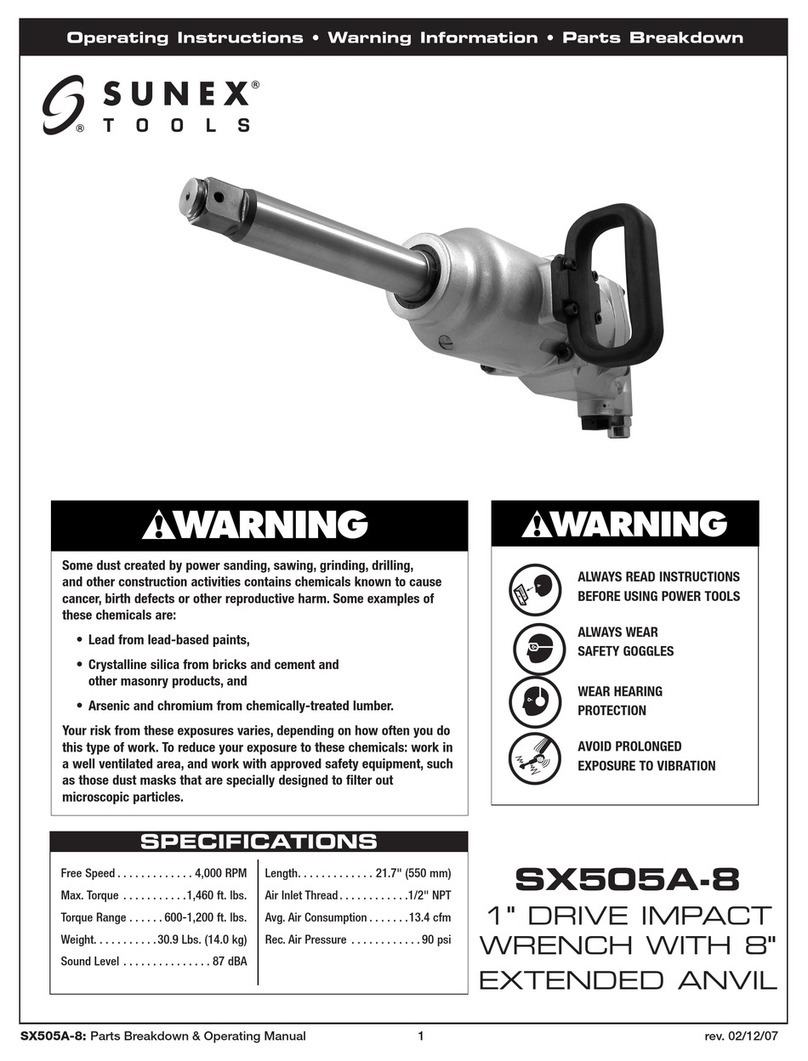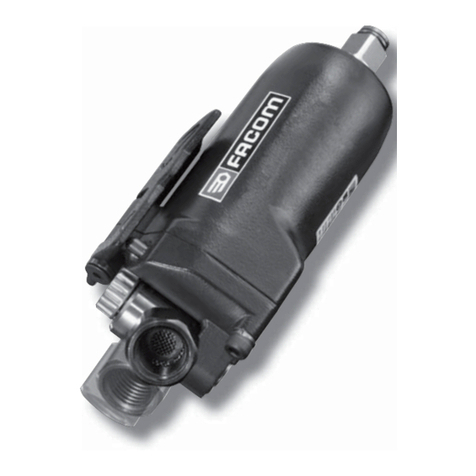
4
SAFETY INFORMATION
• Do not use on a ladder or unstable support. Stable footing on a solid surface enables better
control of the power tool in unexpected situations.
• Hold power tool by insulated gripping surfaces, when performing an operation where the
cutting accessory may contact hidden wiring. Contacting a “live” wire may make exposed metal
parts of the power tool “live” and could give the o perator an electric shock.
4) POWER TOOL USE AND CARE
• Do not force the power tool. Use the correct power tool for your application. The correct
power tool will do the job better and safer at the rate for which it was designed.
• Do not use the power tool if the switch does not turn it on and off. Any power tool that cannot
be controlled with the switch is dangerous and must be repaired.
• Disconnect the plug from the power source and/or the battery pack from the power tool
before making any adjustments, changing accessories, or storing power tools. Such
preventive safety measures reduce the risk of starting the power tool accidentally.
• Store idle power tools out of the reach of children and do not allow persons unfamiliar with
the power tool or these instructions to operate the power tool. Power tools are dangerous in
the hands of untrained users.
• Maintain power tools. Check for misalignment or binding of moving parts, breakage of parts
and any other condition that may affect the power tool’s operation. If damaged, have the
power tool repaired before use. Many accidents are caused by poorly maintained power tools.
• Keep cutting tools sharp and clean. Properly maintained cutting tools with sharp cutting edges
are less likely to bind and are easier to control.
• Use the power tool, accessories and tool bits, etc. in accordance with these instructions,
taking into account the working conditions and the work to be performed. Use of the power
tool for operations different from those intended could result in a hazardous situation.
5) BATTERY TOOL USE AND CARE
• Recharge only with the charger specied by the manufacturer. A charger that is suitable for
one type of battery pack may create a risk of re when used with another battery pack.
• Use power tools only with specifically designated battery packs. Use of any other battery
packs may create a risk of injury and re.
• When battery pack is not in use, keep it away from other metal objects, like paper clips,
coins, keys, nails, screws or other small metal objects, that can make a connection from one
terminal to another. Shorting the battery terminals together may cause burns or a re.
• Under abusive conditions, liquid may be ejected from the battery; avoid contact. If contact
accidentally occurs, ush with water. If liquid contacts eyes, additionally seek medical help. Liquid
ejected from the battery may cause irritation or burns.
• When using in direct sunshine, keep out of water and don’t expose to rain.
• Store indoors, and do not expose to rain or water, avoid direct sunshine.
6) SERVICE
• Have your power tool serviced by a qualied repair person using only identical replacement
parts. This will ensure that the safety of the power tool is maintained.
7) SPECIFIC SAFETY RULES
• Hold power tool by insulated gripping surfaces, when performing an operation
where the fastener may contact hidden wiring or its own cord. Fasteners contacting a
"live" wire may make exposed metal parts of the power tool "live" and could give the
operator an electric shock.
• Know your power tool. Read operator’s manual carefully. Learn its applications and limitations, as well
as the specic potential hazards related to this power tool. Following this rule will reduce shock, re or
